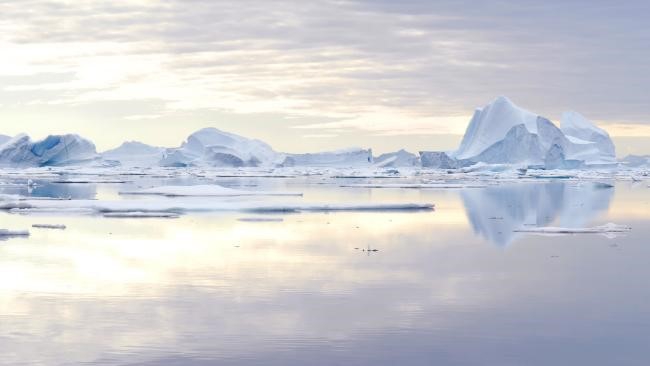
Italicized text from: The Australian, August 24, 2017
Australian research suggests climate modellers have underestimated a natural “thermostat” that helps alleviate the rise in temperatures: immense quantities of reflective compounds, emitted by marine microbes, that act like a handbrake on global warming.
The study, published by the American Meteorological Society, suggests an overlooked source of these so-called aerosols — algae living in ice — could jam the handbrake on even harder. Lead author Albert Gabric said with the Arctic expected to see ice-free summers within a decade, far more of the aerosols would be emitted.
Abstract
We examine the relationship between sea ice dynamics, phytoplankton biomass and emissions of marine biogenic aerosols in both Arctic and Southern Oceans.
Accurate estimation of the climate sensitivity requires a better understanding of the nexus between polar marine ecosystem responses to warming, changes in sea ice extent and emissions of marine biogenic aerosol (MBA). Sea ice brine channels contain very high concentrations of MBA precursors that once ventilated have the potential to alter cloud microphysical properties, such as cloud droplet number, and the regional radiative energy balance. In contrast to temperate latitudes, where the pelagic phytoplankton are major sources of MBAs, the seasonal sea ice dynamic plays a key role in determining MBA concentration in both the Arctic and Antarctic. We review the current knowledge of MBA sources and the link between ice melt and emissions of aerosol precursors in the polar oceans. We illustrate the processes by examining decadal scale time series in various satellite-derived parameters such as aerosol optical depth (AOD), sea ice extent and phytoplankton biomass in the sea ice zones of both hemispheres. The sharpest gradients in aerosol indicators occur during the spring period of ice melt. In sea ice covered waters, the peak in AOD occurs well before the annual maximum in biomass in both hemispheres. The results provide strong evidence that suggests seasonal changes in sea ice and ocean biology are key drivers of the polar aerosol cycle. The positive trend in annual mean Antarctic sea ice extent is now almost one-third of the magnitude of the annual mean decrease in Arctic sea ice, suggesting the potential for different patterns of aerosol emissions in the future.
“Whether that can slow the rate of warming of the Arctic is the trillion-dollar question,” said Dr Gabric, a marine biogeochemist with Griffith University in Brisbane.
Climate scientists have long known that aerosols help mitigate global warming by bouncing sunrays back into space, and by altering clouds to make them more reflective. Experts believe half of the potential warming from greenhouse gases may be offset in this way.
Much research has focused on aerosols produced artificially, through the burning of fossil fuels and vegetation. Scientists worry that if China switched to renewable sources of energy overnight, it could trigger a massive surge in warming.
Aerosols are also produced naturally by volcanoes — such as the 1991 eruption of Mount Pinatubo in The Philippines, which is credited with cutting global temperatures by about 0.5C for two years — and by marine ecosystems.
Algae known as “phytoplankton” are a major contributor, with increasingly massive blooms of these marine creatures emerging in the warming Arctic waters.
The new study analysed terabytes of satellite data to track atmospheric aerosol concentrations. For the first time, it identified sea ice as a “very strong source” of the airborne particles.
Dr Gabric said “ice algae” had evolved to tolerate the subzero temperatures of sea ice and the water that formed it. They used a compound called dimethyl sulfide as an “antifreeze” to survive the chill. “When the sea ice melts during spring, these algae don’t need that protection any more. They expel these compounds, which are degassed to the atmosphere and converted into sulfate aerosols very similar to what you get from burning sulphur-containing coal.
“This happens every year as the sea ice melts. The difference in recent decades is that the ice is melting a lot earlier. We now think that within 10 years there won’t be any ice in the Arctic during summer.”
He said the process had “absolutely not” been factored into the Intergovernmental Panel on Climate Change models of global warming. “The whole aerosol question and its relationship to warming is the biggest uncertainty to projecting what’s going to happen this century.
“This is a new area of research, primarily because people can’t get up there and measure it very easily. You need an icebreaker and a big gun to shoot any polar bears that might want to eat you,” he said.